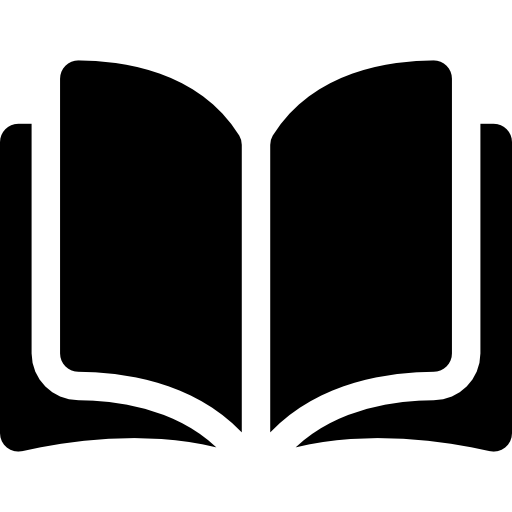
#Gasonline
Home DiscoverAbout
About | Mission | Vision Our Anecdote Our Approach Our Journey Award & Recognitions Social ResponsibilitiesImportant Cell
Anti-Ragging Committee Grievance redressal cellCourses
Teacher's Training Engineering Computer Science Application ITI Pharmacy Paramedical Nursing Management Prak Shastri (Pre UG) New CourseCampus
Central Library & Press Life at Campus Research and Developement Training & Placement Cell Clinical Alliance Digital initiative Club ActivitiesManaging Committe
President's Desk Secretary's Desk Treasurer's Desk Executive Body Executive Member's Desk Member's DeskOther
Gallery Prospectus 2025 Career with us All Institutions Admission EnquiryTeacher Education
Gopsai Avinandan Sangha PTTI Bengal College of Teacher Education College for Teacher Education Institute for Teacher Education Anindita College for Teacher Education Excellent Model College for Teacher EducationEngg. & Technology
Institute of Science & TechnologyManagement
P. G. Institute of Medical Sciences Institute of Science & Technology ManagementAgriculture & Fishery
P. G. Institute of Medical SciencesPharmacy & Paramedical
P. G. Institute of Medical SciencesNursing
Anindita Institute of Nursing
08 Aug
Indian Pharma Sector wins over the globe
GROWTH OF INDIAN PHARMA INDUSTRY
The fact which might not have been discussed much is that Indian pharmaceutical sector supplies over 50% of the global demand for various vaccines, 40% of the generic demand for US and 25% of all medicines for UK. According to the Indian Economic Survey 2021, the domestic market is expected to grow 3x in the next decade. India’s domestic pharmaceutical market stood at US$ 42 billion in 2021 and is likely to reach US$ 65 billion by 2024 and further expand to reach US$ 120-130 billion by 2030. In terms of overall revenue, the Indian pharmaceutical market increased by 13.9% in January 2022. India is the largest producer of vaccines worldwide, accounting for ~60% of the total vaccines, as of 2021. As of August 2021, CARE Ratings expect India's pharmaceutical business to develop at an annual rate of 11% over the next two years, to reach more than US$ 60 billion in value.
The Indian Pharmaceuticals sector has seen some major developments, investments and support from the government in the recent past. For Example:
- The Indian drugs and pharmaceuticals sector received cumulative FDIs worth US$ 19.41 billion between April 2000-March 2022.
- Indian drug & pharmaceutical exports stood at US$ 24.60 billion in FY22 and US$ 24.44 billion in FY21.
- In June 2022, Cipla partnered with Drugs for Neglected Diseases initiative (DNDI) to announce the launch of a 4-in-1 antiretroviral treatment for children living with HIV in South Africa.
- In May, 2022, Dr. Reddy’s Laboratories enters into exclusive partnership with HK inno.N Corporation to commercialise novel molecule Tegoprazan in India & select emerging Markets.
As per the Union Budget 2022-23:
- 3,201 crore (US$ 419.2 million) has been set aside for research and Rs. 83,000 crore (US$ 10.86 billion) has been allocated for the Ministry of Health and Family Welfare.
- 37,000 crore (US$ 4.83 billion) has been allocated to the 'National Health Mission’.
WHAT NEXT:
The future of this industry is quite enthralling. India being the 3rd largest pharmaceuticals industry in the world by volume offers a positive growth trajectory in the coming years.
‘Pharma Vision 2020’ by the Government’s Department of Pharmaceuticals aims to make India a major hub for end-to-end drug discovery.
Over the next five years, India's medical spending is expected to increase by 9–12% placing it among the top 10 nations worldwide. The ability of companies to orient their product portfolio towards chronic therapies for diseases like cardiovascular, anti-diabetes, anti-depressants, and anti-cancers, which are on the rise, will also play a role in future domestic sales growth. Speedy introduction of generic drugs into the market has remained in focus and is expected to benefit the Indian pharmaceutical companies.
@ Sanchita Roychowdhury

GOPSAI AVINANDAN SANGHA
Editor
Related Post

DIGITAL VIOLENCE IS REAL VIOLENCE ...
Every year, the International Day for the Elimination of Violence Against Women reminds us of the urgent need to confront the many forms of abuse women face. While physical violence often dominates headlines, there is another insidious form of harm that thrives in silence and invisibility: digital violence. Online abuse, harassment, and cyber-stalking are not “virtual problems.” They are real violence with devastating consequences.

She Smiled Through A Storm A Daughter s Voice on ...
She taught me to smile through storms; and today, her courage becomes my message to the world. On Cancer Awareness Day, I write in her memory, and for every life that deserves an early chance and lasting hope.

Midnapore Where Freedom Forged its Fire ...
When India’s independence story is told, Delhi’s political negotiations and Calcutta’s big rallies dominate the script. Yet far from the spotlight, Midnapore, now Purba and Paschim was a place where freedom was not a slogan but a lived dangerous commitment. Here, in dusty village lanes and small-town hideouts, people fought in ways that history books found too raw to celebrate.
Midnapore’s struggle was uncompromising. British reports called it “one of the most violent districts” due to political assassinations, sabotage, and underground networks. Colonial accounts painted the rebels as “terrorists,” while post-independence narratives leaned heavily on the Gandhian path, leaving these fighters unmentioned or misrepresented.
1 Comments
Leave a Comment
Recent posts
Categories
- Achievement(26)
- Pharma(1)
- Independence Day(3)
- World Humanitarian Day(1)
- Sports(2)
- Aircraft carrier, Vikrant(1)
- The New Naval Ensign Nishaan(1)
- INTERNATIONAL DAY OF CHARITY(1)
- KARTAVYA PATH(1)
- NATIONAL ENGINEERS DAY(2)
- WORLD HEART DAY(1)
- Tribute(1)
- WORLD CANCER DAY - 4TH FEBRUARY(1)
- RASHTRIYA KHEL DIVAS(2)
- TEACHERS DAY(1)
- ENGINEERS DAY(1)
- WORLD POLIO DAY(1)
- NATIONAL CANCER AWARENESS DAY(2)
- Indian Constitution Day(1)
- NATIONAL POLLUTION CONTROL DAY(1)
- HUMAN RIGHTS DAY(1)
- The Unsung Hero of Indian Independence(1)
- Rabindra Jayanti(1)
- Institution Collaboration(1)
- NATIONAL ANTI TERRORISM DAY(1)
- WORLD ENVIRONMENT DAY(1)
- WORLD MUSIC DAY(1)
- International Day for the Elimination of Violence Against Women(1)

Anupam Biswas
29th July, 2022 15:42
Health benefits of Honey and things to know before you buy honey